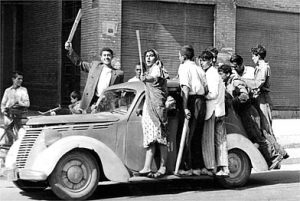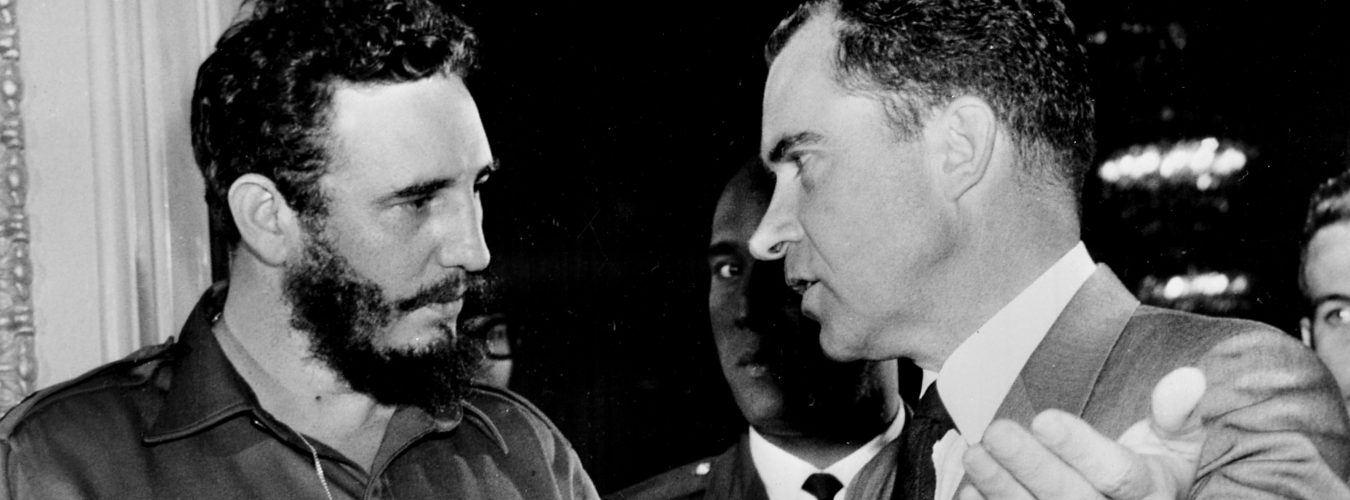
In August of 1953, the United States and Britain directed a covert operation to overthrow the government of the Iranian prime minister, Mohammed Mossadegh, and replace it with a new one led by Reza Pahlevi, the constitutional monarch, or shah, of Iran. Upon approval of the operational plan by President Eisenhower in July, American Central Intelligence agents, led by Kermit Roosevelt, and British M16 agents met in the Iranian capital of Tehran to orchestrate a coup alongside the shah and opponents of the Mossadegh regime that would promote Iranian General Fazlollah Zahedi to the position of prime minister before ceding the power to Pahlevi. Leaked plans led to delays in the reversal of power, but after five days of violent uprisings by local revolutionaries, General Zahedi emerged as the new leader of Iran on August 19, 1953.
The 1953 coup was part of a two-fold U.S. mission to protect foreign investment in Iranian oil and to mitigate communist expansion in the region by both the pro-Soviet Tudeh Party and the Soviet Union itself. As an outright nationalist, Mossadeqh fought both internal corruption and foreign interference, playing a leading role in denying the Soviets an oil concession for Northern Iran during the 1945-1946 Azerbaijan crisis. From Mosadeqh’s perspective, Iran could not achieve full political independence without first establishing economic independence. Mossadegh’s 1951 nationalization of the Anglo-Iranian Oil Company, owned by Britain, embodied his broader desire to strip foreign powers of their monopoly on Iranian resources and was a move that received popular support significant enough to lead to his appointment by the Shah. Britain’s subsequent withdrawal from the Iranian oil market precipitated a political and economic crisis in Iran, and US policymakers feared that Mossadegh would become dependent on Iran’s Communist Tudeh Party which remained Iran’s strongest party and a firm ally of the Soviet Union. Eisenhower recognized the gravity of Mossadeqh’s increasing association with the communists and also feared that other Middle Eastern countries would follow Iran’s lead and nationalize their oil, depriving the West of a cheap means for oil production. He also understood that explicit intervention in Iran would give rise to domestic unrest that could facilitate the conditions Truman feared during his term that would allow for communist penetration. U.S. involvement in Iranian politics paralleled the new aggressive and heavy-handed approach to contain communist expansion in the 1950s as seen in countries like Korea and Guatemala. The US policymakers needed to make clear to the Soviet Union they were not a power to contend with, while also avoiding any provocation that would propel the nation into a nuclear war with the Soviets; a logic that all presidents of the mid-20th century strongly adhered to. While the 1953 coup in Iran was a covert mission, it nonetheless contained many elements of NSC-68 and employed the strategic use of the CIA., to topple a legitimate regime that threatened to insight a US-Soviet confrontation. This specific event nurtured a strong alliance between the Shah and the United States and secured a continuous supply of Middle East oil to the West for over a quarter-century.
On the U.S. home front, major American newspapers such as the New York Times villainized the Mossadegh regime while simultaneously demonstrating optimism towards the possibility of a “friendship” between Washington and the new progressive government led by the shah. In an article published on August 23, 1953, the Times portrayed Mossadeqh as a master of duplicity, “playing between the East and the West” in foreign affairs and exploiting the Iranian army and the Tudeh Party to increase his own power. Simply put, Mossadeq’s deceitful nature was no less of a threat than that of Stalin’s. Although the CIA’s involvement in the coup was kept secret for decades, the paper supported immediate recognition of the Zahedi/Pahlevi regime as part of the greater goal to “reverse [Iran’s] drift into the Russian embrace.” A second article published on the 23rd described the Shah’s return as “triumphal” and “marked by demonstrations of loyalty.” The New York Times strategically adds that the reversal was “accompanied by a marked shift in the popular attitude towards Americans.” This account of the post-reversal conditions in Iran evokes the sense that both the Shah’s regime and the US involvement in his rise to power had strong support of the Iranian people, and thus justifies the continuation of US involvement in Iranian politics. US-Iran relations had begun as early as 1946 when American and British diplomats cooperated with the Iranian leader Ahmad Qavam and Pahlevi to drive Soviet forces out of the northern part of the country. Thus, a continuation of U.S. support for the Pahlevi regime was the right move in the grander scheme to contain Soviet influence.
Works Cited
Craig, Campbell, and Fredrik Logevall. America’s Cold War: The Politics of Insecurity. Cambridge, Mass: Belknap Press of Harvard University Press, 2020.
Painter, David S. “Oil and the American Century.” The Journal of American History. 99, no. 1(2012): 24-39.
Painter, David S. “Oil, Resources, and the Cold War, 1945–1962.” In The Cambridge History of the Cold War, Eds. Melvyn P. Leffler and Odd Arne Westad, Cambridge: Cambridge University Press, 2010: 486-507.
“Reversal in Iran,” New York Times, 23 Aug 1953: A1.
“Shah, Back in Iran, Widely Acclaimed; Prestige at Peak,” New York Times, 23 Aug 1953: A1.

